Do you have a question about the MV Agusta F3 675 and is the answer not in the manual?
Explains the manual's purpose and scope.
Defines important safety and operational symbols used in the manual.
Information regarding the warranty and pre-delivery certificate.
Details vehicle identification numbers and color code for parts.
Outlines warranty validity, exclusions, and service requirements.
Details maintenance intervals, service coupons, and recommended procedures.
Specifies maximum permissible load and transportable mass.
Diagram and list identifying all motorcycle controls and instruments.
Explains sidestand function and safety switch.
Description of buttons and levers on the left handlebar.
Description of buttons and levers on the right handlebar.
Details front brake operation and Antilock Braking System (ABS).
Explains ignition switch positions and steering lock mechanism.
Operation of the gear lever and Quick Shift function.
Overview of the dashboard's instruments and warning indicators.
Defines the meaning and indication of dashboard warning lights.
Explains speedometer, odometer, trip meters, clock, and other display features.
Lists recommended lubricants and fluids for the motorcycle.
Provides essential information and warnings for safe motorcycle operation.
Guidelines for the initial break-in period to ensure optimal performance and longevity.
Step-by-step instructions for starting the motorcycle's engine.
Overview of how to navigate and select various instrument display modes.
Detailed steps for changing display modes like RUN, SPEED LIMITER, TC, etc.
Instructions for resetting the trip counters (TRIP 1 and TRIP 2).
How to activate and set the vehicle's speed limiter.
Procedure for adjusting the engine's traction control level.
Guide to using the chronometer for recording lap times.
Instructions for enabling or disabling the Quick Shift gear change feature.
How to activate or deactivate the Antilock Braking System.
Procedure for setting the time displayed on the dashboard clock.
Guide to selecting different engine mapping modes for performance customization.
Explanation of dashboard alerts for engine faults and malfunctions.
Safe instructions and fuel type recommendations for refuelling.
Steps to open and reassemble the passenger seat for glove compartment access.
Safe procedures for parking the motorcycle using the sidestand.
Instructions for safely lifting the motorcycle using the rear stand.
Overview of adjustable parts for ergonomics, geometry, and safety.
Details for adjusting front and rear suspension settings for different conditions.
Instructions for adjusting the front brake lever position.
Guidance on adjusting rearview mirrors for optimal visibility.
Procedure for adjusting front suspension spring preload.
How to adjust the front suspension's rebound damping.
How to adjust the front suspension's compression damping.
General information on rear suspension adjustments.
How to adjust the rear suspension's rebound damping.
How to adjust the rear suspension's compression damping.
Procedure for correctly adjusting the motorcycle's headlight beam.
Notes on product improvements, international regulations, and documentation updates.
Guidelines on responsible vehicle use and disposal of parts for environmental protection.
| Engine Type | Three cylinder, 4 stroke, 12 valve |
|---|---|
| Displacement | 675 cc |
| Bore x Stroke | 79 mm x 45.9 mm |
| Compression Ratio | 13.0:1 |
| Max Torque | 71 Nm (52.4 lb-ft) at 10, 600 rpm |
| Frame | ALS Steel tubular trellis |
| Rear Suspension | Progressive Sachs, single shock absorber |
| Max Power | 128 hp (94.2 kW) at 14, 500 rpm |
| Cooling System | Liquid cooled |
| Fuel System | Electronic fuel injection |
| Transmission | 6-speed |
| Front Suspension | Marzocchi USD telescopic hydraulic fork |
| Front Brake | Double floating disc with Brembo radial-type monobloc, 4 piston calipers |
| Rear Brake | Single steel disc with Brembo 2-piston caliper |
| Dry Weight | 173 kg (381.4 lbs) |
| Fuel Tank Capacity | 16.5 L (4.36 U.S. gal.) |
| Seat Height | 805 mm (31.7 in) |
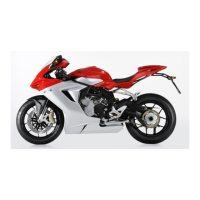
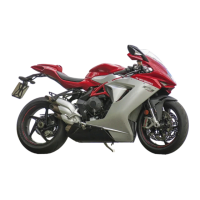
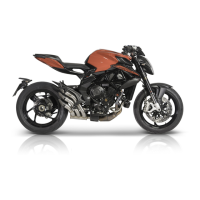
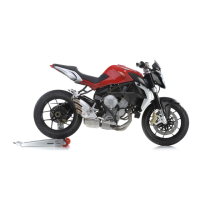

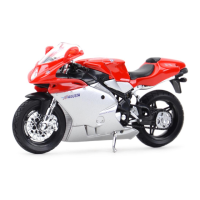
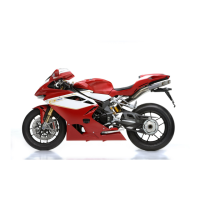
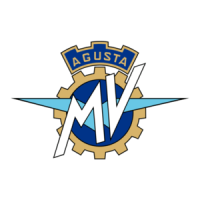
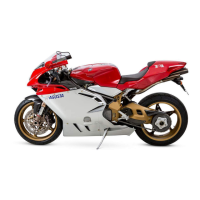
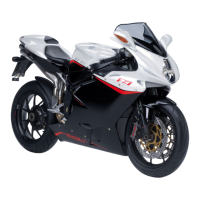

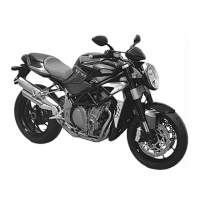
